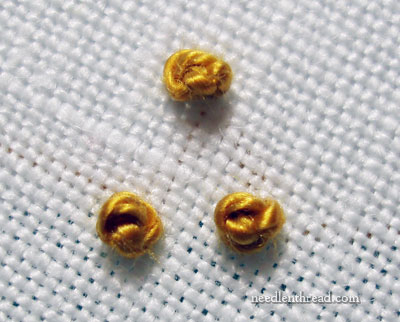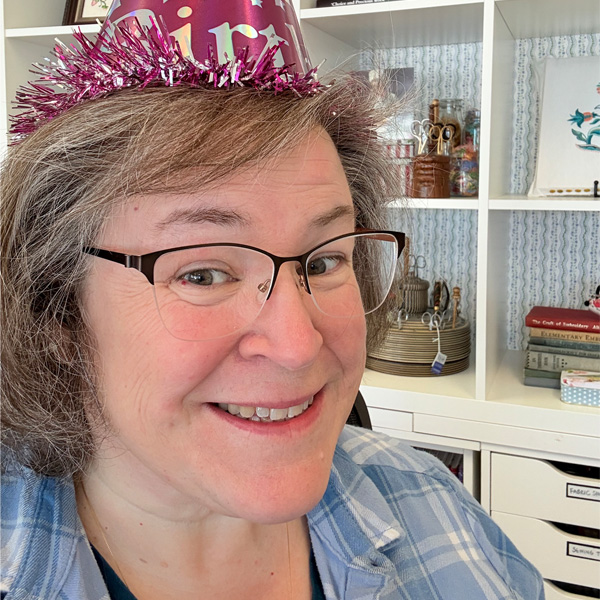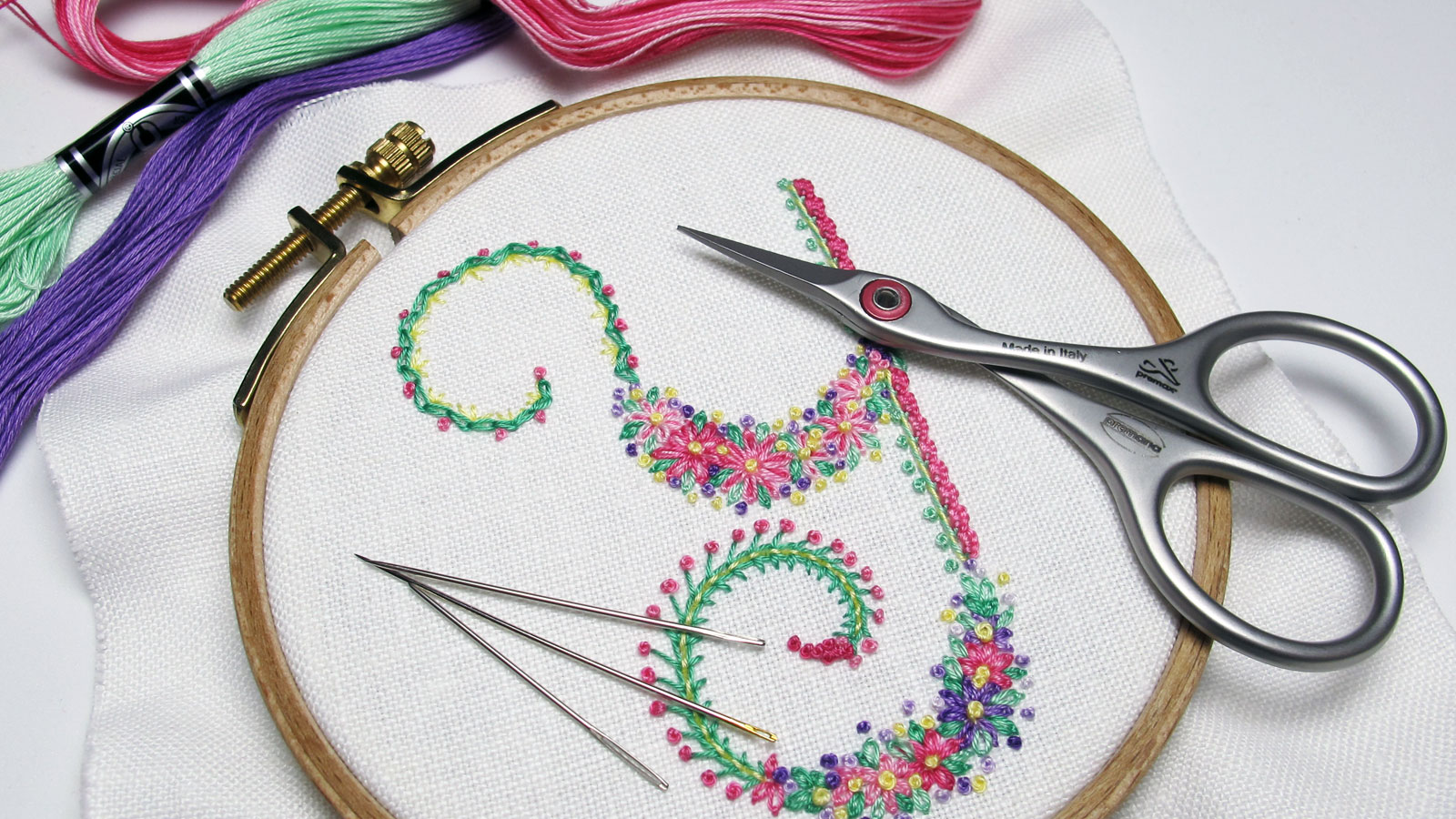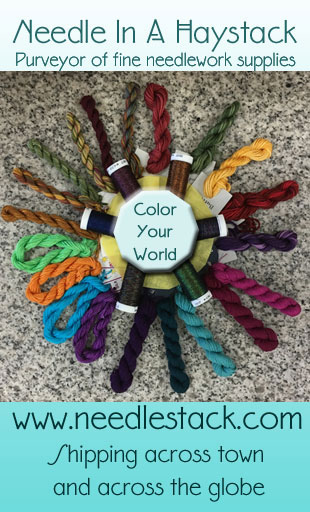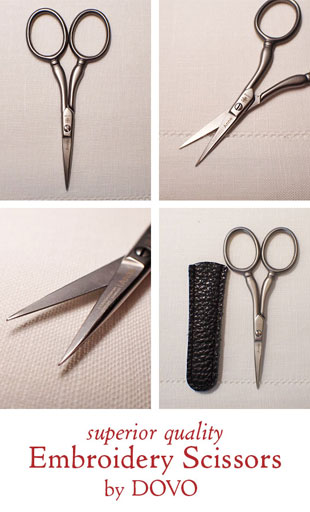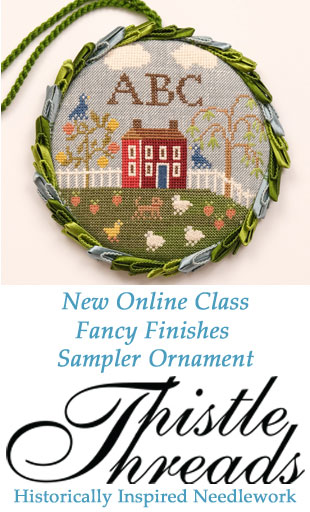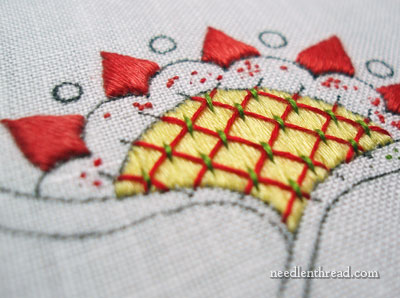June 14, 2012
June 13, 2012
Give-Away! Portuguese Whitework Book
Today, courtesy of Yvette Stanton, I’m giving away another copy of Portuguese Whitework: Bullion Embroidery from Guimarães. If you’d like to know what this book is all about, and what it can teach you about hand embroidery, you’re welcome to read my review of this book that focuses on a beautiful whitework technique.
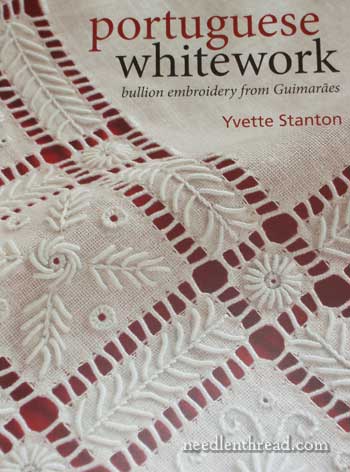
June 12, 2012
Laced Backstitch Video Tutorial
The laced backstitch used in hand embroidery is somewhat like the whipped backstitch. To create the laced backstitch, the needle passes under a line of previously stitched backstitches, but instead of always passing under the stitches in the same direction, the laced backstitch passes under in alternate directions from stitch to stitch. To put it really simply, the needle goes up under one stitch and down under the next.
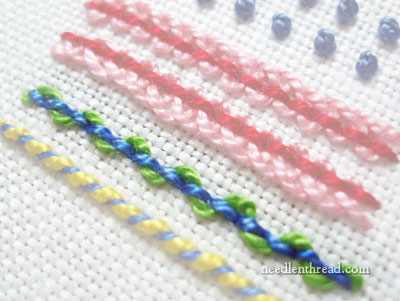
June 11, 2012
New Jersey – Embroidered!
Here’s a bit of embroidery inspiration for you from Judith, a reader here on Needle ‘n Thread. I love this, and I think it’s a terrific idea for a hand embroidery project.
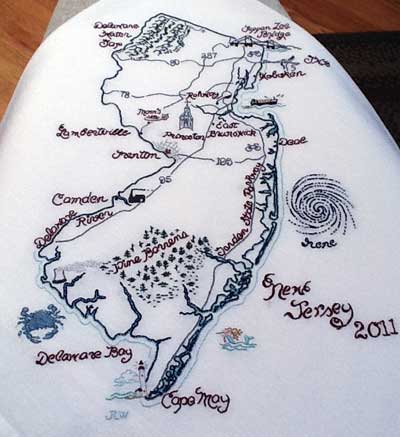
June 8, 2012
Stitch Play: Play!
Lately, I’ve been playing a lot – probably too much. There’s some serious work going on in my stitching world, too, but what’s been occupying me most pleasurably is the whole notion of Play.
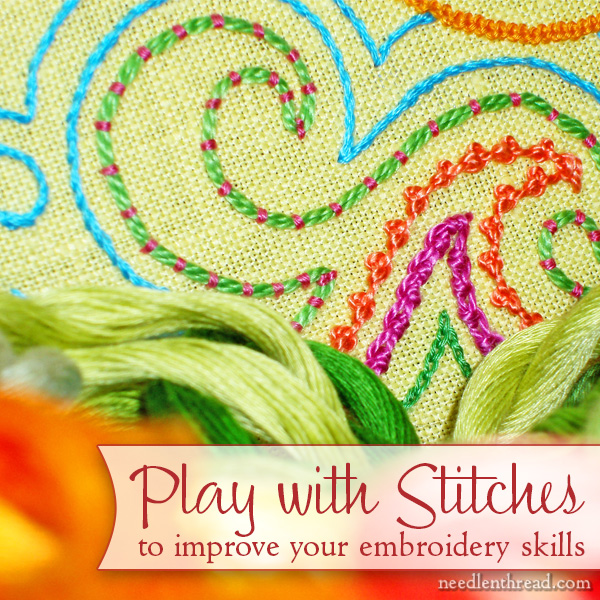
June 7, 2012
Isolated French Knots, Part 2
Earlier this week, we looked at one way to create isolated French knots (or colonial knots, incidentally) without carrying threads across the back of the fabric.
Today, I’ll show you two other methods I use to begin isolated French knots (depending on the thread I’m using), and one method to secure practically any isolated knot after it’s made. Keep in mind that this is how I do it – this doesn’t mean there aren’t other (and probably better!) ways to start and end isolated French knots. But for those of you who don’t know how, if you try the methods suggested here, I think you’ll discover they both work.
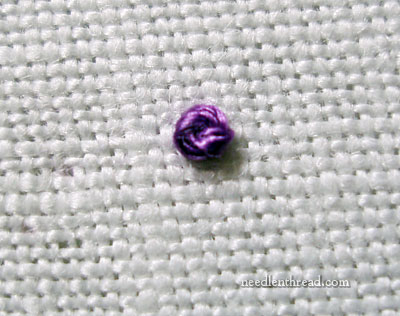
June 6, 2012
The French Knot vs. The Colonial Knot
I have a theory about embroidered knots. It’s not a profound theory. It’s actually a very simple theory, and it goes like this:
Seen one, seen ’em all.
Whether you’re stitching the French knot or the colonial knot, in the final result, there’s no great difference between the two.
